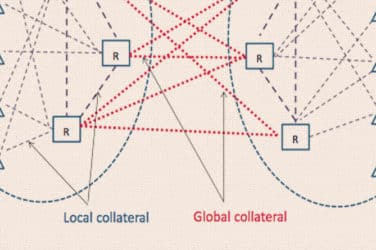
The European Central Bank said a lot of work is still needed to fully integrate the post-trade marketplace in the region despite the completion of the migration of central securities depositories to TARGET2-Securities.
The central bank launched the T2S platform in 2008 to end fragmentation and lower the cost of cross-border settlements. T2S began operating in 2015 and the final wave of central securities depositories migrated to the platform in September last year. Over the last two years 22 central securities depositories in 20 markets have migrated to T2S in five waves. They can settle euro securities transactions and Danish kroner will also be available from October this year.
The eighth T2S Harmonisation Progress Report from the ECB’S advisory group on market infrastructures for securities and collateral said the platform provides a solid basis for European post-trade harmonisation, which will become even more important in the context of the Capital Markets Union initiative for the region.
The newly-published #T2S Harmonisation Progress Report shows that by the end of 2017, the T2S markets achieved 85% compliance with the harmonisation standards and took major steps to address the remaining gaps.https://t.co/34NYKNSZrx pic.twitter.com/n7lR8XprBF
— TARGET Services (@TARGET_ECB) February 27, 2018
However, the advisory group also warned that a lot of work remains to achieve a fully integrated post-trade marketplace in Europe.
“In particular, further efforts are required from public authorities and market stakeholders in the areas of corporate actions, legal harmonisation, withholding tax and cross-border shareholder registration,” added the report.
The advisory group is also working on increasing harmonisation for collateral management practices in post-trade.
“This work – supported by a very wide range of stakeholders as well as by the relevant Eurosystem initiative regarding the Eurosystem Collateral Management System – is also expected to result in the definition of additional harmonisation activities in the near term” said the report.
The study continued that corporate actions still have a relatively high level of noncompliance across T2S markets.
“This would appear to confirm that corporate actions are a difficult area, with complex business processes for asset servicing involving rules and procedures developed by a range of different actors,” said the ECB. “Nevertheless, it should be noted that significant progress has been achieved by the T2S markets even in this area -after migration of the final wave T2S markets are now fully compliant with 89% of the individual T2S corporate action standards, compared with 71% as of June 2017.”
In order to improve post-trade integration, the Commission set up the European Post-Trade Forum, an informal expert group from across the markets.
The EPTF said in a report last year: “The post-trade landscape in Europe is still characterized by diversities and fragmentation that cause inefficiency and risks. Operational, fiscal and legal harmonisation and standardisation as proposed in the Giovannini Reports are means to increase efficiency and to reduce risks.”
The Association for Financial Markets in Europe said in its response to the EPTF report that the consultation on post-trade in a capital markets union are an important milestone in much-needed European post-trade reform.
Werner Frey, managing director, post trade at AFME, said in a statement: “As a next step, we are very much in favour of dismantling the narrowly defined EPTF Barriers with a view to promoting the global competitiveness of European capital markets. At the same time, a strategic plan for a comprehensive European post-trade reform should be developed.”
The trade body added that the dismantling of barriers to harmonising post-trade across the EU should start immediately without waiting for the possible development of distributed ledger technologies or the outcome of negotiations over the UK leaving the trade bloc.
The AFME stressed the importance of making progress on removing the EPTF barriers and proposed that the European Commission set up a strategy group to set objectives for comprehensive European post-trade reform and make recommendations for achieving the defined objectives. The organisation highlighted the following areas as requiring more in-depth work – systemic risk /risk transmissions in the settlement space, harmonisation of tax processes and collateral management.





